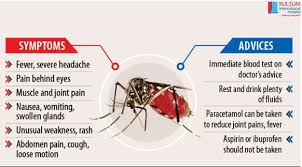The increasing rate of health issues in Pakistan is alarming. These are leading to new kinds of diseases that are difficult to treat because of the lack of finances and economic conditions. Pakistan is currently ranking 1t 122 out of 190 countries in terms of health care according to the World Health Organization (WHO). Despite significant improvements over the past decades, Pakistan has the third-highest rate in the world when it comes to infant mortality.

Healthcare in Pakistan

More than 60 million people are living below the poverty line in Pakistan. These people cannot even meet their basic needs due to limited finance. Additionally, if they are diagnosed with any disease, they have nowhere to go. The local hospitals, nurses, and doctors are not enough to cater to all the underprivileged people in Pakistan. The government has not made health care in Pakistan a priority.
Local hospitals have been treating poor people for free but they are not able to cater to many people at a time due to lack of resources. Also, if patients need surgical treatment from local hospitals, then they have to wait for a long time because of the waiting list. By the time their turn comes, the patient either expires or their health gets worse. There is a backlog of more than 2 million surgeries in Pakistan and the number is increasing with each passing day.
On the other hand, people living in rural communities are not aware of their disease due to which they are not able to get proper treatment on time. There are a number of diseases that are widespread in Pakistan and poor people are mostly suffering from them. The main reason is lack of awareness and finance.
Here is the list of top health issues in Pakistan:
1 – Malaria

The majority of people living in slums suffer from Malaria. This disease is caused when mosquitoes breed on unclean water and unsanitary conditions which is very common in rural areas. Malaria can cause death too if left untreated. It is one of the top health issue in Pakistan.
2 – Tuberculosis
Tuberculosis is another major disease affecting a large number of people in Pakistan. According to the World Health Organization (WHO), Pakistan ranks in one of the top 5 countries that are highly prone to tuberculosis. This disease spreads by sneezing and coughing and can become deadly if not treated on time.

3 – Dengue Fever
Dengue fever has been affecting people since 2010. In Pakistan, it has taken thousands of lives of people living in rural areas. Dengue is a viral infection which is caused by a specific mosquito type. It causes fever, severe headache, and weakness in the patient. Even after many years, dengue is still prevailing across the country.

4 – Cancer

Cancer is another deadly disease that is one of the leading causes of death in Pakistan. The two major cancer types that are widespread in Pakistan are breast cancer and lung cancer. More than 40,000 women in Pakistan die every year because of breast cancer. There is a lack of awareness and proper health care facilities due to which cancer is rising at an alarming rate in Pakistan. On the other hand, lung cancer is caused mainly because of smoking as Pakistan is the largest consumer of tobacco in South Asia.
5 – Ischemic Heart Disease

Ischemic Heart disease is one of the most fatal diseases in Pakistan. Factors such as pollution, unhealthy food, unclean water, and smoking give rise to this heart disease. In rural and slum areas of Pakistan, people don’t have enough resources to treat themselves if they suffer from heart disease. This results in causing further health problems and even deaths.
6 – Stroke

Around 350,000 cases of stroke are reported in Pakistan each year. Stroke is one of the leading causes of death in Pakistan. Depressive symptoms in particular, but also chronic stress in life, increase the risk of older people having a stroke or transient ischemic attack. There is a need for a better understanding of important, potentially modifiable stroke risk factors, including stress and negative emotions among patients to avoid strokes.
7 – Diabetes

More than 7 million people are suffering from diabetes in Pakistan right now. Lack of nutritious food and awareness is increasing the number of diabetic patients in the country. According to the study, by 2030 Pakistan will be among the top 5 countries having the largest diabetic population in the world.
8 – Hepatitis – Most Common health issue in Pakistan
Hepatitis A and E are formed through the consumption of unhealthy food and drinking unclean water. Since the hygiene conditions are far from satisfactory in the rural and slum areas of Pakistan, hepatitis is increasing with each passing day. The symptoms of such hepatitis include diarrhea, jaundice, and fever. Hepatitis E also affects the urinary tract in the body. On the other hand, hepatitis B and C are also very common all over Pakistan. Hepatitis B and C are formed because of blood transfusions and sharing pieces of equipment such as razors, toothbrushes, and other household articles.
9 – HIV/AIDS
According to the UNAIDS, it is estimated that there are around 100,000 HIV positive cases in Pakistan. The major cause of this disease in Pakistan is the use of infected syringes among drug addicts. Sindh has the highest rate of HIV with more than 50,000 patients. The government needs to take serious action to prevent HIV AIDS in Pakistan as the number of patients with this disease is growing at an alarming rate with each passing year.
10 – Maternal and Child Health


Mother and child health is a serious issue that is more widespread in rural areas than that in cities. Due to lack of proper food, awareness, and treatment, women in rural areas suffer during their pregnancy resulting in poor health of their babies. In many cases, babies are born dead or they suffer from minor to major birth defects. Maternal and child health are one of the serious health issues in Pakistan which needs immediate action.
11 – Acute Respiratory Infection
Acute respiratory infection is the leading cause of death in children of Pakistan. The main causes of this infection include malnutrition, lack of vaccines, and awareness. In rural Pakistan, women are unable to provide proper nutrition to their children due to a lack of finance. This results in many health complications in their children.

12 – Hypertension

Around 20% of the total population in Pakistan is suffering from hypertension making it one of the health issues in Pakistan. Due to a lack of money, people with hypertension don’t seek medical treatment. Hypertension, if not treated on time may lead to other serious health issues including stroke, heart, and kidney diseases.
13 – Asthma
Around 7% of Pakistan’s population is suffering from asthma and the percentage is expected to increase in the coming years. The main causes of asthma include smoke, dust and pollution. There is no permanent cure for asthma but with proper medical treatment, patients can live a normal life without any issue.
14 – Diarrhea
More than 300,000 children die because of diarrhea every year in Pakistan. Children in rural areas mostly suffer from this disease because of an unhealthy diet and unhygienic living conditions. Due to limited finance, the families of these children are unable to provide them with medical treatment. These conditions result in the deaths of thousands of children suffering from diarrhea in rural areas. Diarrhea is one of the leading health issues in Pakistan.
Foods to Eat When You Have Diarrhea

15 – Mental Health
Around 60 million people in Pakistan are suffering from a mental disorder. Only a few cases are reported but they are not treated properly as there are no advanced medical facilities available for mental health patients in Pakistan. Sadly, many patients never seek treatment and they are shunned by their family members. It is one of the serious health issues in Pakistan.

There is a need to provide proper health care facilities not only to the upper class but also to the rural areas all over Pakistan. The government should take serious action to promote the quality of healthcare all over Pakistan. Not only this, but proper education about these diseases is also important especially to the poor community.
CONCLUSION
Pakistan faces numerous health challenges that significantly impact its population’s well-being and economic growth. The country’s health system struggles with inadequate funding, infrastructure, and human resources, leading to:
- High infant and maternal mortality rates
- Prevalence of infectious diseases (e.g., malaria, tuberculosis, and waterborne illnesses)
- Rising non-communicable diseases (e.g., diabetes, cardiovascular diseases, and cancer)
- Mental health concerns (e.g., depression, anxiety, and stress)
- Malnutrition and stunting
FAQS
- What are the major health challenges in Pakistan?
- Infant and maternal mortality, infectious diseases, non-communicable diseases, mental health concerns, and malnutrition.
- What is the current healthcare system like in Pakistan?
- Mixed public-private system, inadequate funding, infrastructure, and human resources.
- How does poverty impact health in Pakistan?
- Limited access to healthcare, poor sanitation, and nutrition.


